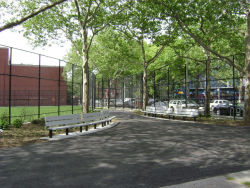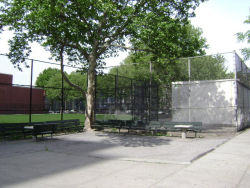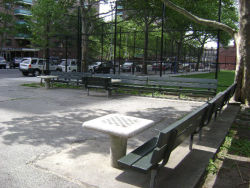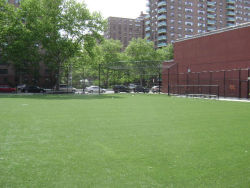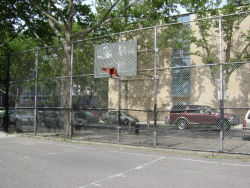Dunbar Playground
Dunbar Playground
This playground honors Paul Dunbar (1872-1906), an accomplished and prolific African American poet. Born on June 27, 1872 in Dayton, Ohio, Dunbar spent much of his youth as the only minority student in all-white academic institutions. Among his childhood friends were aviation pioneers Orville (1874-1948) and Wilbur Wright (1867-1912). A popular and respected figure in the Dayton’s Central High School Community, Dunbar served as Editor-in-Chief of his school newspaper, president of the Literary Society, and received praise for his poetry.
Upon completion of high school, Dunbar was forced to accept a job working as an elevator operator, where he attempted to sell his poetry to people who rode the elevator. Feeling his plight, Orville Wright offered to fund Dunbar’s newspaper, The Daily Tattler, but the paper was an economic failure. In 1893 Oak and Ivy, Dunbar’s first published book of poems, was well received in local areas, and earned him an invitation to recite some of his work at the 1893 World’s Fair in Chicago. At the event, Dunbar befriended Frederick Douglass (1817-1895). Impressed with Dunbar’s work, Douglass called him “the most promising young colored man in America.” In 1895 Dunbar’s second publication, Majors and Minors, earned him national and international fame.
Upon his return from a touring trip abroad to recite his poetry, Dunbar accepted a position at the Library of Congress. Dunbar’s subsequent works won him continued praise and the special privilege of joining President William McKinley’s inauguration parade. Infirmity prompted Dunbar’s resignation from the Library of Congress. Yet despite his illness, by 1906 Dunbar had completed twelve books of poetry, five novels, and one play. He died a few months later of tuberculosis. Dunbar left behind an impressive body of literary work, which spoke to all races.
In 1954, the City purchased this property, located at the intersection of East 161st Street, East 163rd Street, Cauldwell Avenue and Trinity Avenue in the Bronx neighborhood of Morrisania, to serve as a jointly operated playground for Parks and the Board of Education. Originally part of J.H.S 120 when it opened on September 25th, 1962, it was later renamed the Martin Van Buren Houses Playground. On June 18, 1987, Parks Commissioner Henry J. Stern renamed the playground in honor of Dunbar. Shaded by London planetrees (Platanus x acerifolia), the playground features basketball courts, green benches, game tables, and an asphalt field.
Check out your park's Vital Signs
Clean & Safe
Green & Resilient
Empowered & Engaged Users
Share your feedback or learn more about how this park is part of a
Vital Park System

